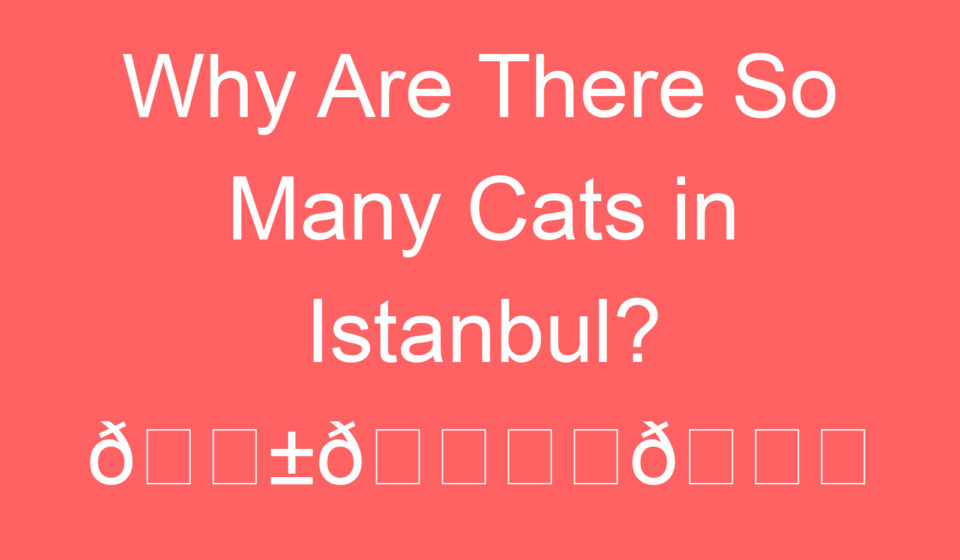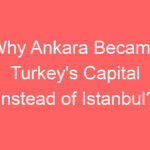
Why Are There So Many Cats in Istanbul? 🐱🏙️💖
Istanbul is a city celebrated for its rich history, breathtaking architecture, and vibrant street life—but one of its most endearing and curious features is its large population of cats. Whether lounging lazily on sunny sidewalks, gracefully navigating bustling markets, or curling up in the corners of quaint cafes, these cats are an iconic part of the city’s charm. Tourists are often captivated by their presence, prompting many to wonder why this metropolis is home to so many feline residents. 😺🌞🏛️
Table Of Content
Historical Roots 🏰🐈📜
The tradition of cats in Istanbul stretches back centuries to the time of the Ottoman Empire. The majority of houses were constructed primarily from wood, which made them vulnerable to infestations of mice and rats. Cats were introduced as natural pest controllers, protecting food stores, important documents, and household provisions from these rodents. Beyond their functional role, cats became symbols of domestic harmony, gradually evolving from working animals into cherished companions who lived alongside humans. This long history has allowed cats to become embedded in Istanbul’s cultural landscape, with generations of residents growing up alongside these urban animals. 🏡🐾🕰️
Cultural and Spiritual Significance 🕌😻✨
Cats hold a unique place in Turkish culture, largely influenced by Islamic traditions. In Islam, cats are regarded as clean animals and are associated with positive spiritual qualities. Historical accounts even suggest that the Prophet Muhammad had a fondness for cats, which set a precedent for kindness and care towards them. This reverence extends into daily life in Istanbul, where residents view cats not merely as animals, but as beings deserving respect and compassion. They are often seen as symbols of good fortune and calm, contributing to the city’s aura of warmth and communal care. 🌟🐱💖
Communal Care and Social Integration 🏘️🐾💞
In Istanbul, street cats are widely considered communal pets, nurtured by the city as a whole. Locals often leave out food and water, construct small shelters for them during colder months, and sometimes even bring sick cats to veterinary clinics. Cafes, shops, and restaurants frequently welcome cats, allowing them to roam freely and interact with customers. This integration of cats into public life fosters a mutually beneficial relationship, creating a dynamic where humans and felines coexist harmoniously. The Turkish no-kill policy for stray animals further ensures that these cats can live freely and safely without fear of euthanasia, allowing populations to flourish. 🐾🏠🍲
Adaptability in an Urban Environment 🌆🐈🛤️
Cats are exceptionally adaptable creatures, capable of thriving in diverse environments. Istanbul offers an ideal urban landscape, combining outdoor cafes, historic neighborhoods, and busy marketplaces with narrow alleys and quiet corners. Cats utilize these varied spaces to find food, shelter, and companionship. Their ability to navigate both densely populated areas and more secluded neighborhoods allows them to seamlessly integrate into the daily life of the city. They are not just surviving—they are thriving, contributing to Istanbul’s character and charm. 🐱🌇💫
A Living Tradition and Tourist Attraction 📸🐾🎒
The presence of cats in Istanbul is more than a quaint anecdote; it is a living tradition that reflects centuries of human-animal partnership. This relationship is rooted in practical necessity, spiritual respect, and communal care, creating a cityscape where cats are both protected and celebrated. For visitors, encountering these cats offers a unique insight into Istanbul’s culture, its values, and its human-animal connections. Many tourists find themselves drawn to the city’s cats, snapping photos, offering treats, or simply enjoying the warmth and life they bring to the streets. 🐈❤️📷
Whether viewed as guardians of tradition, spiritual symbols, or charming street companions, Istanbul’s cats are a testament to the city’s enduring respect for life, community, and harmony between humans and animals. They are an integral part of the urban experience, inviting both locals and tourists alike to witness a centuries-old bond that continues to flourish today. 😺🌿🏙️

